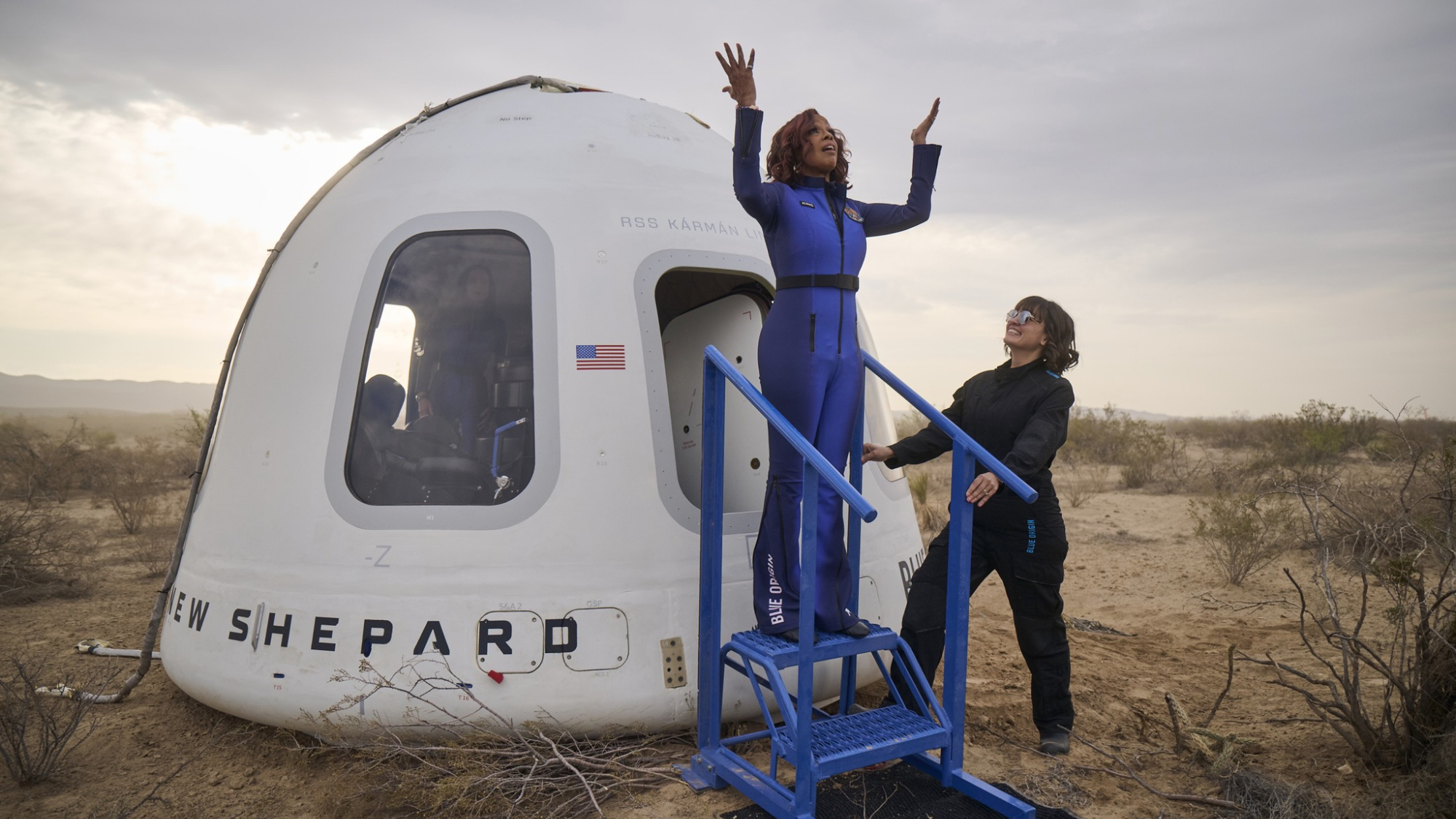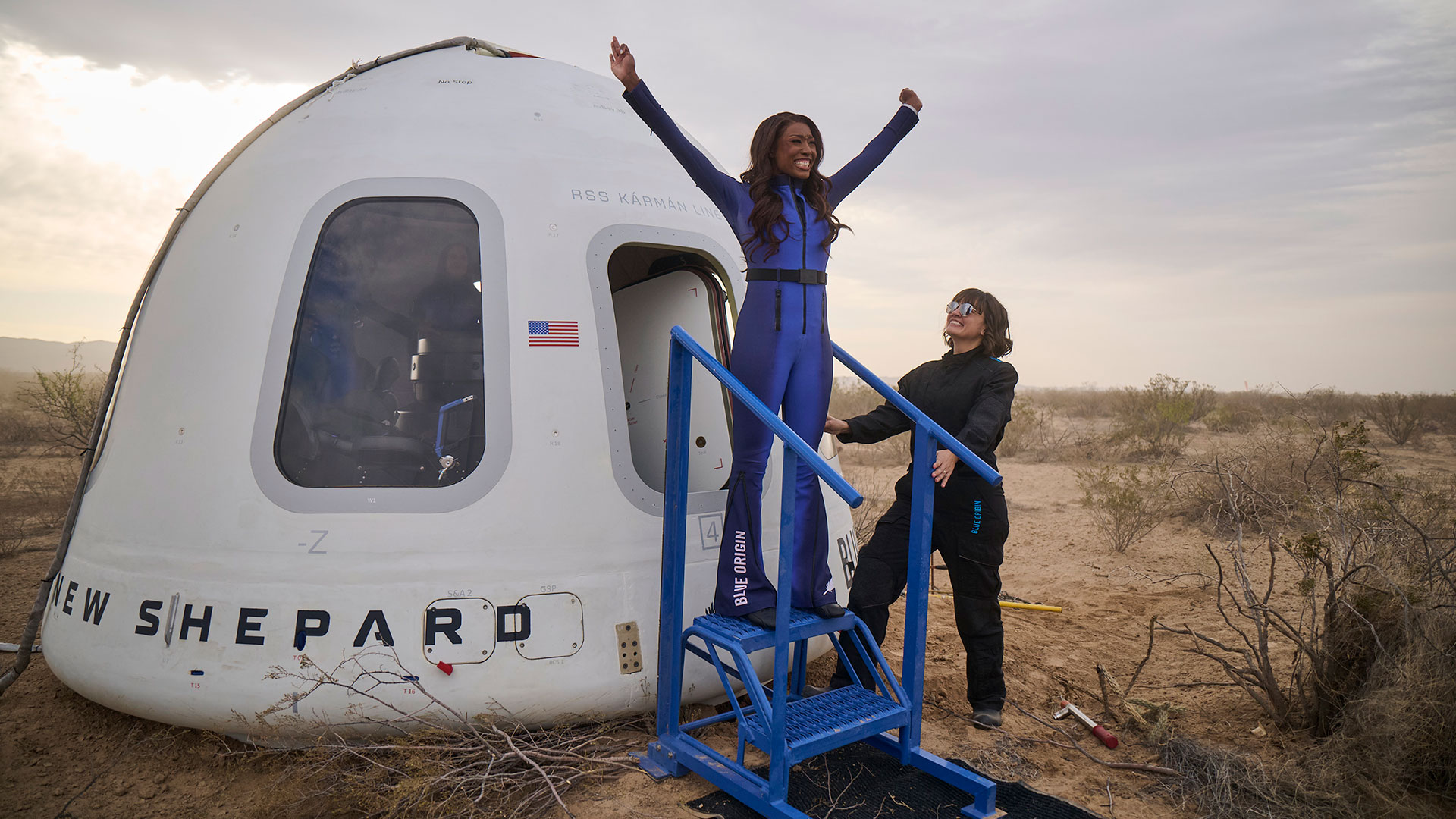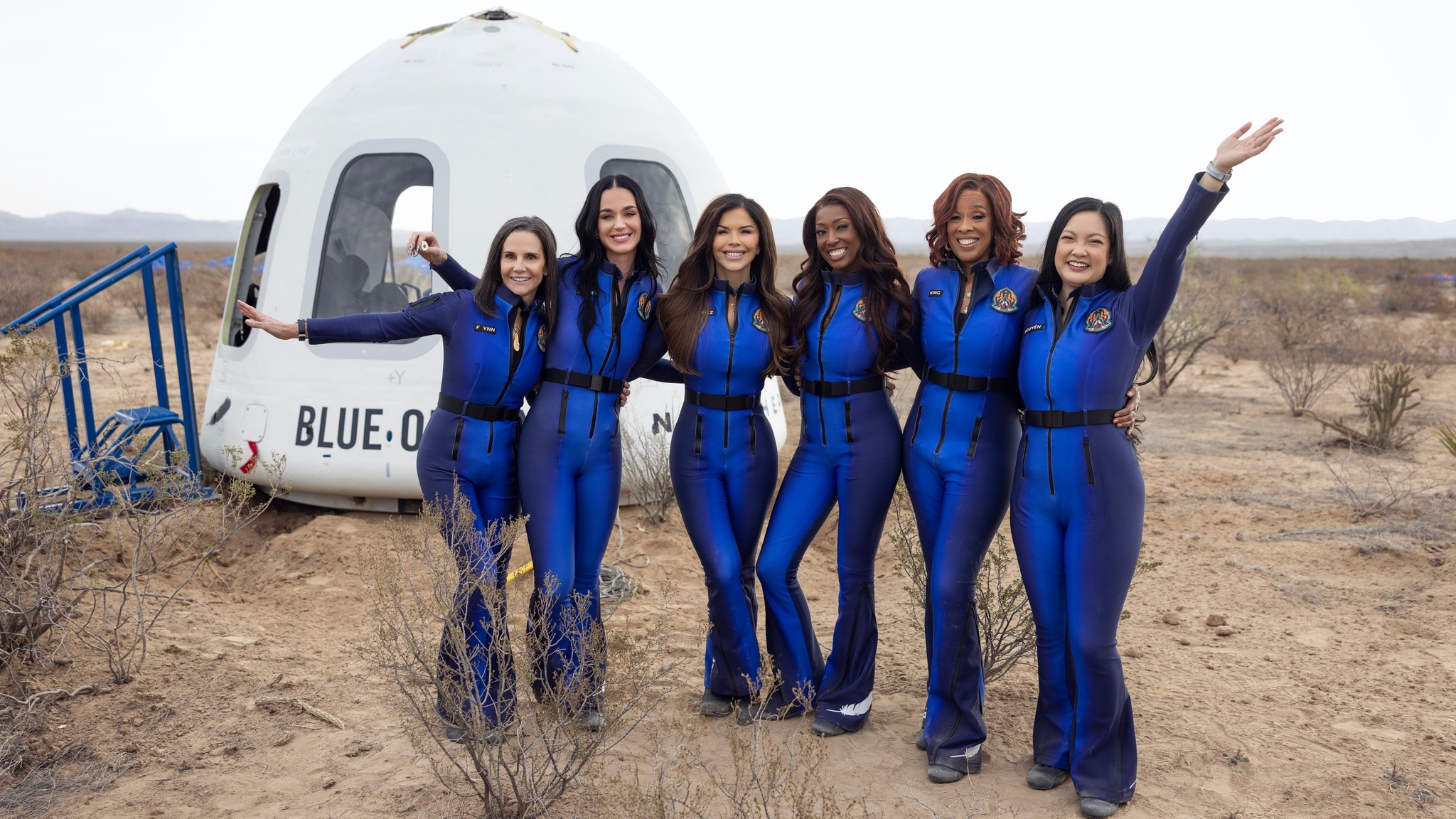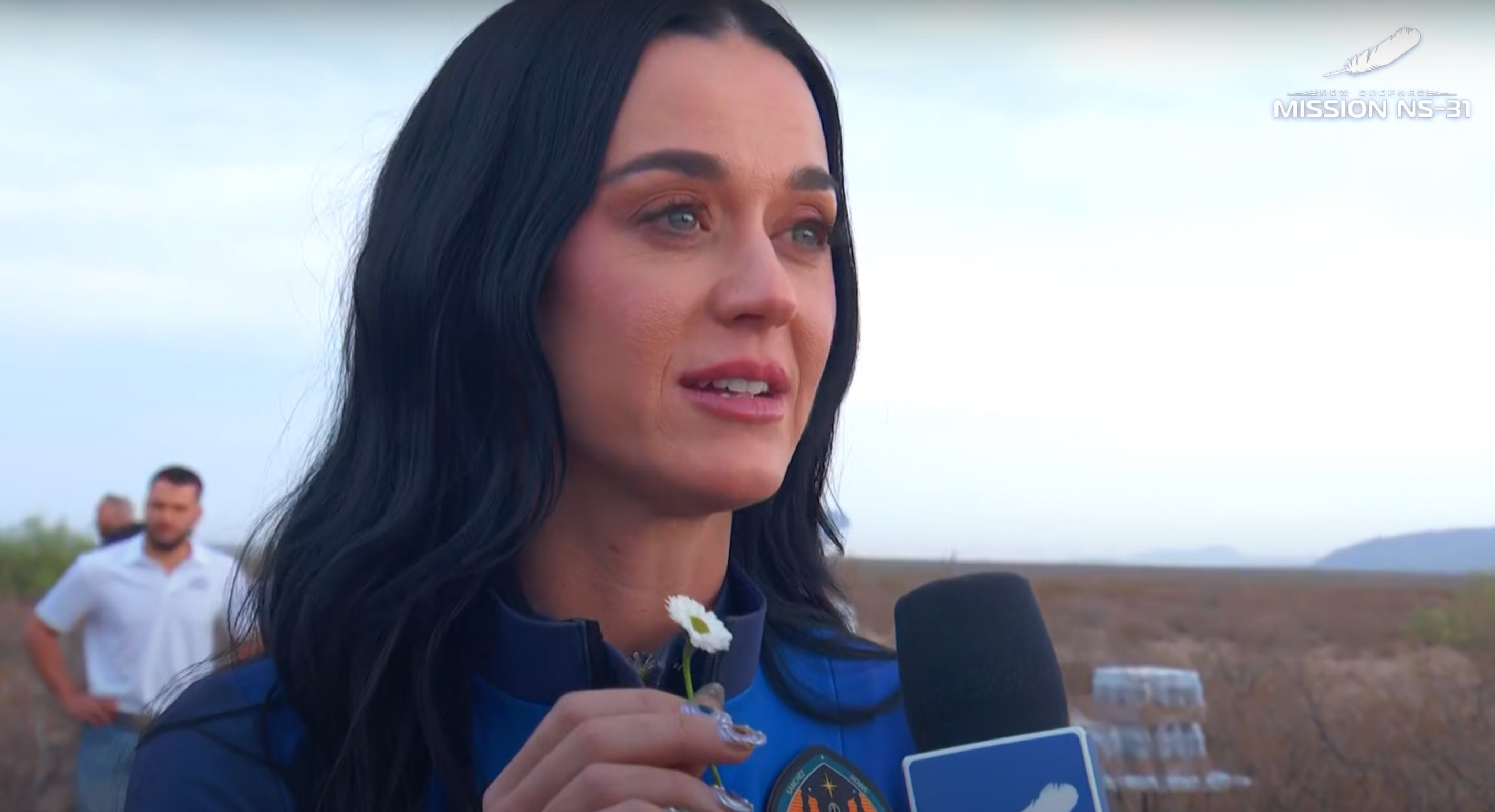Shuttle Endeavour Lands Safely in Florida
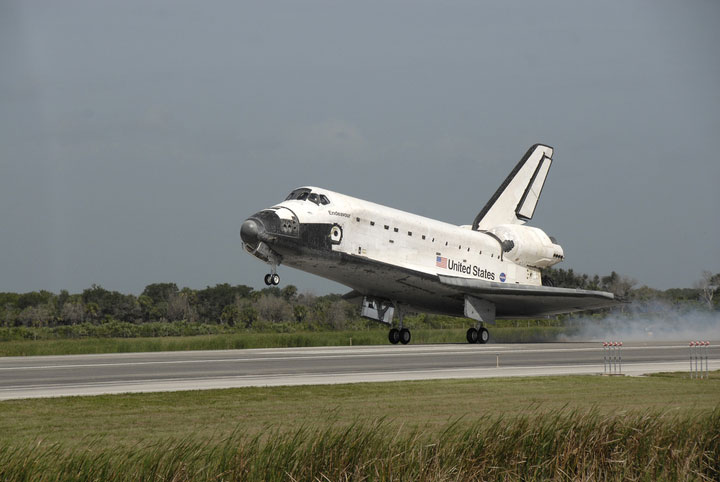
This storywas updated at 2:00 p.m. EDT.
HOUSTON - Spaceshuttle Endeavour touched down in Florida on Friday morning, bringing to an enda successful 16-day mission to complete Japan's Kibo science laboratory at theInternational Space Station (ISS).
Shuttlecommander Mark Polansky piloted Endeavour to a 10:48 a.m. EDT (1448 GMT)landing at NASA?s Kennedy Space Center, beating the weather - whichcalled for a chance of rain - for a smooth landing at its home port in CapeCanaveral, Fla. The astronauts landed after delivering a brand new experimentporch to the space station along with vital spare parts and a new crewmemberfor the outpost?s six-man crew.
"Welcome home!"NASA astronaut Alan Poindexter radioed Endeavour?s crew from Mission Control inHouston. "Congratulations on a superb mission from beginning to end. Verywell done."
"That'swhat it is all about," Polansky replied after thanking the whole flight team."We're happy to be home."
Returning homewith Polansky and Hurley were STS-127 mission specialists Dave Wolf, TomMarshburn, Chris Cassidy and Canadian Space Agency astronaut Julie Payette.Cassidy became the 500th person in space during the 6.5 million-mile (10.4million-km) mission.
Their seventhcrewmate for the trip home was Japan?s first long-duration space stationresident, Koichi Wakata. A flight engineer for three successful station crewssince March, Wakata spent 138 days in space before being replaced by NASAastronaut Tim Kopra, who launched on Endeavour and will return to Earth withthe next shuttle mission targeted for launch in late August.
Get the Space.com Newsletter
Breaking space news, the latest updates on rocket launches, skywatching events and more!
?I long forsushi, so that?s the first thing I would like to have,? said Wakata, whoreturned to Earth just one day before his 46th birthday. He added that a dip inone of Japan?s hot springs is also high on his list.
A NASAspokesperson confirmed that Wakata did indeed have sushi waiting for him afterdisembarking the shuttle Endeavour. He also brought home some high-techunderwear and other clothing designed to be stink-free and antistatic,which wore for a month at a time to test the Japanese-made space garb. Wakatasaid he received no complaints from his crewmates.
Front porchinstalled, batteries replaced
Endeavourrocketed to orbit July 15 and reached the space station two days later to beginits ambitious construction flight. The combined seven-member shuttle crew andsix-man station staff formed the largest crowd aboard any one spacecraft inhistory - 13 people.
?Wecertainly miss being there, but there?s no place like home,? Polansky said.
One of thestation?s twospace toilets and a carbon dioxide removal device broke down during themission. Both were swiftly repaired, but the carbon dioxide scrubber shut downagain Wednesday. Station astronauts hoped to repair it soon.
PilotHurley said the best moments of the flight came during those rare moments ofdowntime, when all 13 astronauts could gather together, swap stories and telljokes.
?It justseemed a little funnier up here,? Hurley said before landing.
Endeavour?sprimary mission was to deliver the final component of the Japan AerospaceExploration Agency?s $1 billion Kibo (?Hope?) laboratory, anexterior platform designed to support experiments. Its installation,including the addition of three initial payloads, required a combination offive spacewalks and the use of three robotic arms, including the Japanese armon Kibo.
Wolf ledEndeavour?s spacewalking team to install the Kibo porch, deliver vital spareparts and replace aging solar array batteries during the shuttle flight. They also added vital cameras to Kibo in preparation for the arrival of Japan's first unmanned cargo ship in September.
The spacestation is now 83 percent complete and weighs 685,000 pounds, with seven moreshuttle flights ahead to finish construction by 2010, when NASA plans to retireits three-shuttle fleet. It has a wingspan as long as an American footballfield and can be easily seen at night by the unaided eye.
?I can?tsay enough how great this mission was,? NASA?s space operations chief BillGerstenmaier said after Endeavour landed. ?The crew and the ground teams pulledit all together."
One of the best
Despite an earlyconcern for tile damage as a result of foam debris falling off of Endeavour?sexternal fuel tank during launch, mission managers praised STS-127 for itsrelative clean performance over the course of its 248 orbits.
?It?s been asgood as some of the best ones we?ve flown in the last year or two,? saidmission management team chair Leroy Cain. ?Certainly one of the best.?
In addition tothe foam strikes, which were cleared for re-entry after a series of routineheat shield inspections, Endeavour experienced an issue with one of its threepower-providing fuel cells and lost use of one of its forward thrusters. Bothproblems however, posed no impact to the STS-127 mission.
Now back onEarth, Endeavour will be serviced and prepared for its next flight, STS-130,scheduled for a return trip to the International Space Station early next year.NASA?s next shuttle mission, STS-128, is targeted for launch on Aug. 25 aboardorbiter Discovery pending a check of its fuel tank foam insulation.
- Video - Space Station's Population Boom
- Video - The Kibo Lab: Japan's Hope in Space - Part 1, Part 2
- SPACE.com Video Show - The ISS: Foothold on Forever
Join our Space Forums to keep talking space on the latest missions, night sky and more! And if you have a news tip, correction or comment, let us know at: community@space.com.

Robert Pearlman is a space historian, journalist and the founder and editor of collectSPACE.com, a daily news publication and community devoted to space history with a particular focus on how and where space exploration intersects with pop culture. Pearlman is also a contributing writer for Space.com and co-author of "Space Stations: The Art, Science, and Reality of Working in Space” published by Smithsonian Books in 2018.In 2009, he was inducted into the U.S. Space Camp Hall of Fame in Huntsville, Alabama. In 2021, he was honored by the American Astronautical Society with the Ordway Award for Sustained Excellence in Spaceflight History. In 2023, the National Space Club Florida Committee recognized Pearlman with the Kolcum News and Communications Award for excellence in telling the space story along the Space Coast and throughout the world.
